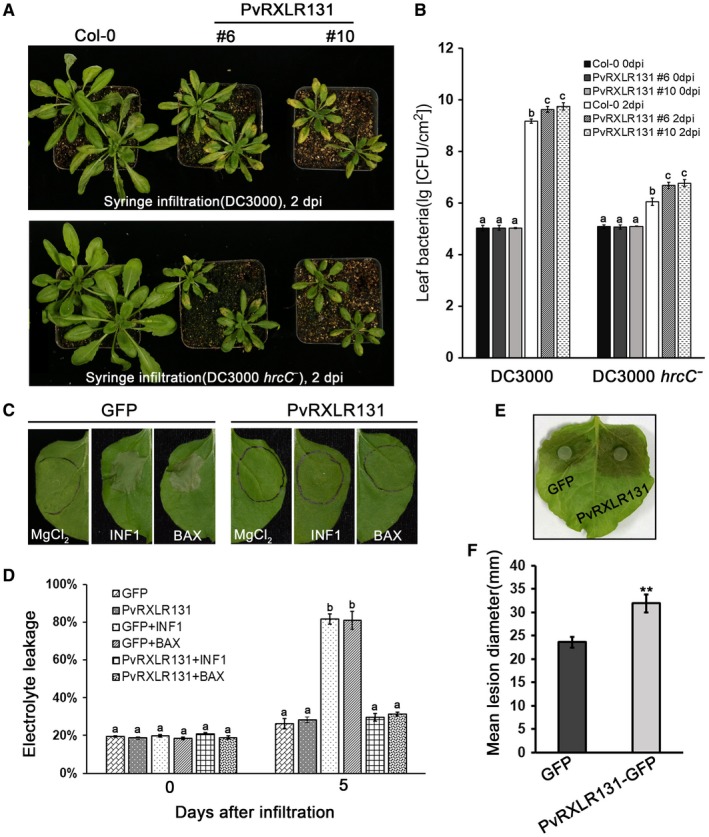Figure 4.

PvRXLR131 suppresses plant innate immunity. (A) PvRXLR131 impairs host resistance to Pseudomonas syringae pathovar tomato DC3000 and the mutant strain DC3000 (hrcC−). Two strains were infiltrated into Arabidopsis leaves and phenotypes were scored at 2 dpi. Representative images are shown. Quantitation of bacterial amount are labelled (B). Each data point represents means ± standard deviations (SDs) from three biological replicates; values with different letters show significant differences between mean values at P = 0.05 (LSD). (C) PvRXLR131 suppresses cell death triggered by two elicitors in Nicotiana benthamiana. Agrobacterium GV3101 carrying the pGR106‐PvRXLR131 and pGR106‐GFP constructs were simultaneously infiltrated into N. benthamiana leaves; GV3101 containing pGR106‐elicitor was infiltrated at the first infiltration region after 24 h. MgCl2 (10 mM) was infiltrated as the negative controls. Cell death was scored 5 days after the second infiltration. Quantification of cell death by electrolyte leakage are shown (D). The data represent means ± standard deviations (SDs) from three biological replicates; values with different letters show significant differences between mean values at P = 0.01 (LSD). (E) PvRXLR131 accumulation increases Phytophthora capsici growth on N. benthamiana. PvRXLR131‐GFP and GFP were transiently simultaneously expressed in N. benthamiana leaves; leaves were detached at 36 h, followed by inoculation with P. capsici discs on the abaxial side of the leaves. Disease development was evaluated at 3 dpi and growth area was plotted as average lesion diameter (F). Each data point represents means ± standard deviations (SDs) from three biological replicates; asterisks indicate significant differences from GFP control (**P < 0.01, Student's t‐test).
